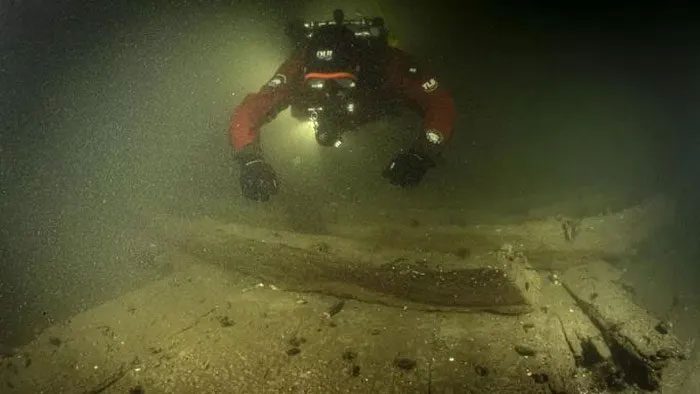In the mouth of a river where any wooden ship that sinks quickly decays, a ghost ship has emerged intact after 400 years thanks to a once-in-a-millennium phenomenon.
According to Live Science, this eerie ghost ship was excavated by maritime archaeologists in the Trave River estuary, located in northern Germany; it was later studied by a team of scientists from the University of Kiel, Germany.

A diver approaching the ghost ship – (Photo: CHRISTIAN HOWE).
This is a “death zone” for sunken ships, where the conditions of the water and microorganisms quickly cause any submerged wooden piece to rot, except for the mysterious ghost ship that has just been excavated.
Examination results indicate that the ship is approximately 400 years old, representing a rare find from the Hanseatic period, when a coalition of Northern European trading associations dominated the Baltic region from the 13th to the 17th century.
The ship was first discovered in 2020 during a routine ultrasound survey. Since then, 13 dives have been conducted to study and excavate the wreck.
The manner in which the ship sank is also quite eerie: It did not capsize but sank vertically, remaining majestic as it was above water. The entire hull is submerged in fine silt at a depth of 11 meters, in an area primarily consisting of saltwater just outside the Trave River mouth, where it flows into the Baltic Sea.
The reason the ship remains intact is that it was almost completely and rapidly covered by a layer of fine silt at the bottom of the water, in some mysterious coincidence. This layer of silt has helped the entire hull avoid the erosion caused by microorganisms.
The ghost ship measures approximately 20-25 meters in length and is a cargo ship with a mast. Onboard, there are still intact lime barrels that it carried for the construction industry on its final voyage.


















































